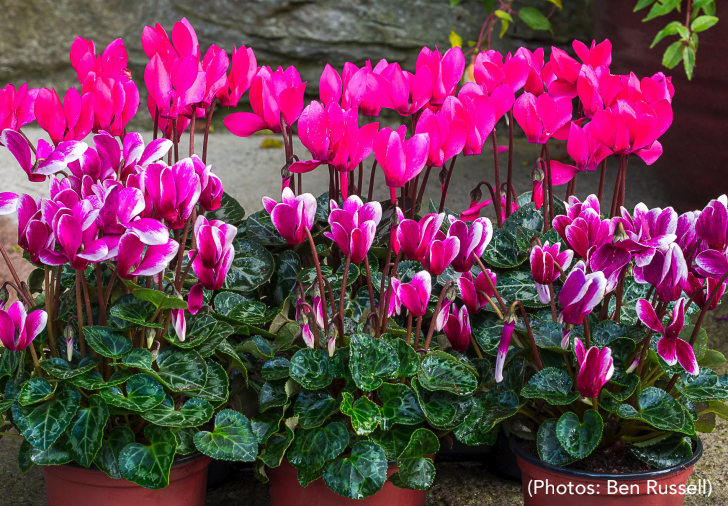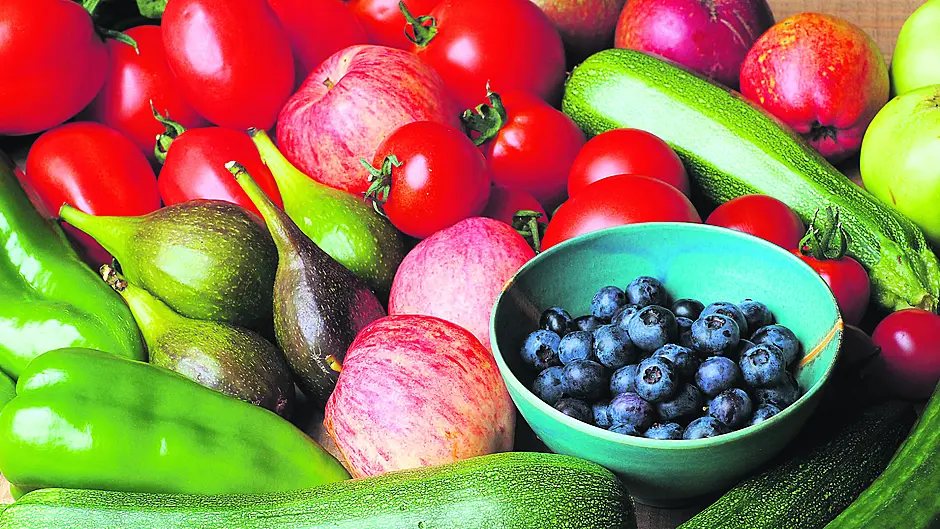As the year draws to a close and growth slows, there’s less to do in the garden, but it doesn’t mean things come to a dead stop either. Prepare now and be ready for spring.
BY JOYCE RUSSELL
There comes a point in the year when it is a relief not to have to put so much work into the garden. This point may change each year depending on the weather, how much has been harvested already, and how much has been set up for the next few months. It can also be influenced by how much time we feel we want to invest at that moment.
Weather and day length are usually the main signals. As autumn progresses, growth rates decrease and summer crops come to their end or at least slow down. We may have lots of winter crops growing well and grass growth is surely easing. It might be tempting to turn our attention in other directions.
All gardeners that I talk to seem to get this ‘autumn slowdown’ but I would caution against stopping garden jobs just yet and would advocate an approach of coasting down steadily over the next few weeks. There are always some jobs that can be done in any month of the year and spreading them out can make you more prepared, and less overwhelmed, when the busy months come around again.
Winter gardens often look a bit neglected and barren, but we can do our best to keep on top of things until the weather says there’s no choice in the matter. The following is a list of some possible jobs. You may not need or want to do them all, but here are some options to be aware of.
Plant new things!
If the flower beds look dull and window box flowers are finished, take a trip to a garden centre and see what’s on offer. There will be a range of flowers to provide new color. Cyclamen are a favorite of mine and they flower for months in a dry corner of the garden, window box, or a sheltered container. It doesn’t cost much to make a smile-inducing display through autumn and winter.
Think flower bulbs too. There’s a good range still available in shops. Stalwarts like daffodils and tulips come in a wide range of varieties. Or branch out with some exciting new options.
You can plan where to put new trees, shrubs and fruit bushes too. Bare-root planting time is only a few weeks off.
 Plant cyclamen in window boxes and containers.
Plant cyclamen in window boxes and containers.Mowing and strimming
Some people have chosen to reduce the amount of grass that they cut, preferring instead to have biodiverse areas that are left to grow as they will. Whether you mow a large patch or just mow paths through a wild area, it is one of those tasks that will end soon. I often don’t mow past the end of October and only mow in November if it is a mild month and grass growth warrants it.
Clean the mower and put it away in a dry shed when you feel the year’s mowing is done. If you are able to get the machine serviced at that point, it will be all ready to get going when spring comes around. If you have fuel in cans, make sure they are protected from rain – you can do without adding water to a petrol engine.
 Pick ripe apples before they fall from the tree and get bruised, or eaten by wildlife.
Pick ripe apples before they fall from the tree and get bruised, or eaten by wildlife.
Cover beds
Empty beds can be cleared of weeds and dug over if you have the time. Dig in some manure or lay a layer over the top of the soil and then cover with an impermeable mulch if possible. This stops water leaching away a lot of nutrients. If you can’t cover the bed, then don’t dig in any feed until spring.
 Cover empty beds.
Cover empty beds.
Nets and crop cover
Remove covers that are no longer needed to protect crops. These will last longer if they are stored in a dry shed. It’s a good idea to mend any rips in netting and most robust woven crop cover can be put in the washing machine to clean it up. Stuff washed and dried covers into large bags and hang these up in a shed.
Other mulch
This is a good time to pile leaves onto empty beds. These rot slowly and don’t blow around too much once they are wet and softened. You can use cardboard as a mulch too. It breaks down fairly fast and you should remove any bits of tape that will not rot. Both of these mulches will help shed rain provided the level of covering is maintained.
Take a look around
You need to look at the garden in a particular way in order to spot jobs that need doing. Collect any pots, wrappers, bags etc that are loose in the garden. Check all support structures and fix them. Tie in plants with extra ties if needed. Remove garden furniture to dry storage or cover with a waterproof cover if they must stay in place. You only need to do this when sitting-out weather is finished – the date can be different each year. Canes, frames and other folding structures may have done their work. Dismantle if needed so they pack flat and stack in a dry shed until needed again. Check for broken boards, catches and hinges. It’s good to have all secure before strong winds arrive.
Lift roots
 Lift and store carrots so you can enjoy them later.
Lift and store carrots so you can enjoy them later.
Any root crops that are still in the ground are best lifted now. They only become a magnet for slugs and can rot as a consequence if they are left in the ground. Carrots, beetroot and potatoes all store very well and can last for months. Parsnips taste best if lifted after a first frost – try one or two and see how you find the flavor.
Tender plants
Tomatoes, cucumbers, courgettes and peppers can all keep cropping for a number of weeks if grown in a polytunnel or greenhouse. You only need to lift plants when they finish cropping or have too heavy a burden of disease. Climbing beans and Pak Choi will suffer if temperatures fall – lift and use them if an early frost is likely to cause damage.
Compost and manure
Make sure piles are covered and that coverings won’t blow away. Compost heaps always benefit from a stir up to incorporate air – turn the contents of a full bin into an empty one to aerate everything. You can add in extra layers if you need more nitrogen or carbon in the mix.
Dig drains
Some people love digging drains and making water flow away from where it isn’t wanted to where it should be. If we get a wet winter then you will be glad of each water diverting channel that you have managed to make. Drains don’t need to be deep, and sometimes a shallow indentation will work, they just need to slope downwards and to carry a constant flow away from any waterlogged area.
Enjoy the bounty
This is a good time to make jams, jellies, sauces, chutneys and pickles. You may have a freezer full of berries and fruits and there are more again to be picked from trees or from the ground where they have fallen. Use as much as you can – preserving fruits is a great way to store them. Beautiful jars of preserves make excellent presents so don’t forget to make a few extra.
 Use your fruit bounty to make jams and preserves for your store cupboard.
Use your fruit bounty to make jams and preserves for your store cupboard.
This article originally appeared in The Southern Star's Autumn Home and Garden supplement. Subscribers can read the full supplement via our ePaper.








